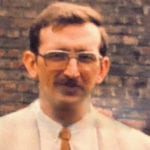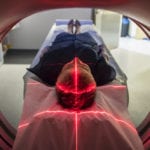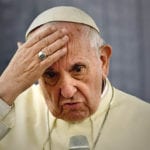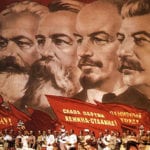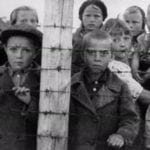 History
History  History
History  Animals
Animals Ten Times It Rained Animals (Yes, Animals)
 Mysteries
Mysteries 10 Devastating Missing Child Cases That Remain Unsolved
 Creepy
Creepy 10 Scary Tales from the Middle Ages That’ll Keep You up at Night
 Humans
Humans 10 One-of-a-kind People the World Said Goodbye to in July 2024
 Movies and TV
Movies and TV 10 Holiday Movies Released at Odd Times of the Year
 Politics
Politics 10 Countries Where Religion and Politics Are Inseparable
 Weird Stuff
Weird Stuff 10 Freaky Times When Famous Body Parts Were Stolen
 Miscellaneous
Miscellaneous 10 Interesting Things Manufacturers Stopped Making and Why
 Gaming
Gaming 10 Funny Tutorials in Games
 History
History 10 Desperate Last Stands That Ended in Victory
 Animals
Animals Ten Times It Rained Animals (Yes, Animals)
 Mysteries
Mysteries 10 Devastating Missing Child Cases That Remain Unsolved
Who's Behind Listverse?

Jamie Frater
Head Editor
Jamie founded Listverse due to an insatiable desire to share fascinating, obscure, and bizarre facts. He has been a guest speaker on numerous national radio and television stations and is a five time published author.
More About Us Creepy
Creepy 10 Scary Tales from the Middle Ages That’ll Keep You up at Night
 Humans
Humans 10 One-of-a-kind People the World Said Goodbye to in July 2024
 Movies and TV
Movies and TV 10 Holiday Movies Released at Odd Times of the Year
 Politics
Politics 10 Countries Where Religion and Politics Are Inseparable
 Weird Stuff
Weird Stuff 10 Freaky Times When Famous Body Parts Were Stolen
 Miscellaneous
Miscellaneous 10 Interesting Things Manufacturers Stopped Making and Why
 Gaming
Gaming 10 Funny Tutorials in Games
10 Horrifying Facts About The Tiananmen Square Massacre
The Tiananmen Square massacre was more than just a photograph. Today, it’s immortalized in the image of a lone man standing against a line of tanks. But “Tank Man” was just one small moment in a fight for freedom that played out over 50 long days and across nearly every part of the country.
The battle started on April 15, 1989, when the death of Hu Yaobang, a party leader with democratic leanings, sparked protests across the country. Students came out with seven demands calling for greater freedoms and an end to government corruption.
It started as a peaceful protest. But it soon turned violent and, in time, into a massacre that will be etched into history forever.
10 Police Officers Beat 300 Students At Xinhua Gate
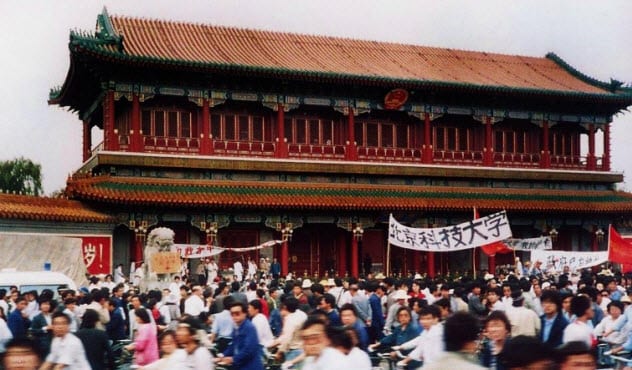
More than a month before the massacre began, the first hint of violence broke out at Xinhua Gate. Students from universities across Beijing had come out to protest. A crowd of about 10,000 people staged a sit-in in front of the gate, calling for Premier Li Peng to come out and meet them and yelling, “Long live democracy!”
A gang of 1,000 police officers came out to keep the order, linking their arms to form a circle around 300 of the main protesters and blocking them off from the others. The students were trapped—and, for the first time, things started to get violent.
Some of the students tried to break through the police barricade, while others grabbed rocks and bottles and hurled them at the police. At first, the officers, under orders not to hurt the students, did nothing but hold them back. But by dawn, their orders had changed.[1]
Officials sent buses to the site to carry the students back to their campuses, but some of the 300 refused to go. When they resisted, the police, pent up with frustration, pulled out their batons and beat the students half to death. They were dragged onto the buses with heads cracked and bleeding and clothes red with blood.
A peaceful protest had officially turned violent. From that moment, there was no going back.
9 Protesters Brought The Soldiers Food
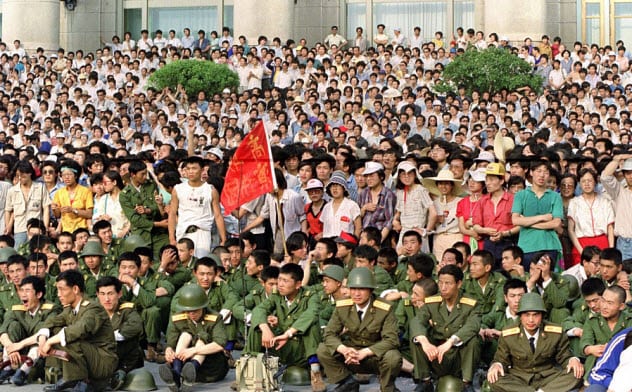
Even after the Xinhua Gate incident, many of protesters still felt a solidarity with the soldiers who were sent in to keep the peace. Some protesters even fed the soldiers.
On May 19, after more than a month of protests, the Chinese government gave the order to send in the troops. They started to march toward Tiananmen Square, but people swarmed to the streets to block their way. Thousands of people, student protesters and sympathetic citizens alike, rushed into the streets, begging the soldiers not to go any further.
The soldiers were trapped, blocked by throngs of people who chanted slogans at them and lectured. But the people didn’t let the troops suffer. According to one military man, Chen Guang, protesters brought the trapped soldiers food and helped escort them to bathrooms to make sure they were safe.
“We were told they were bad people,” Chen Guang said, “but the students seemed so honest and earnest.”
It was an act of kindness that makes what followed all the more horrifying. Soon enough, Chen Guang and his unit would make their way through, sneaking into the heart of the city in disguise. There, they would be ordered to open fire at the people who, just a few days before, had brought them food.[2]
8 A General Was Arrested For Refusing To Use Force
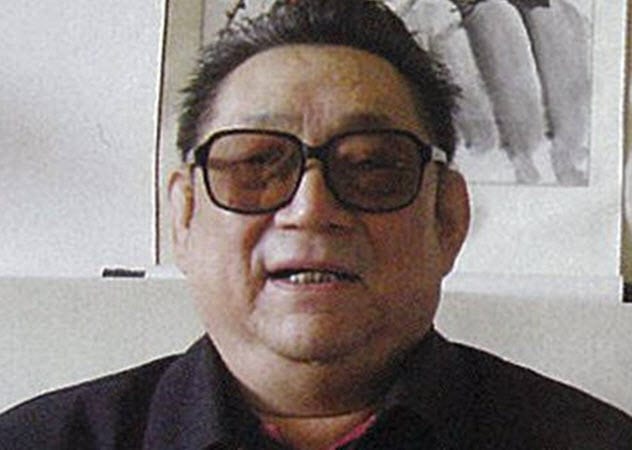
Before the party officials gave the order to send soldiers in, the officials brought the troops’ commanders into headquarters. They were ordered to pledge their support to the party and their willingness to combat their own people with military force.
Only one man refused: Major General Xu Qinxian. “The People’s Army has never in its history been used to suppress the people,” he later told the press. Speaking out, he knew, was taking a risk with his life. But this, he decided, was better than opening fire on the Chinese people. “I’d rather be beheaded than be a criminal in the eyes of history,” he said.
When the orders came, many soldiers felt the same way as Xu Qinxian. Seven commanders passed around a petition begging the government to reconsider. “The people’s military belongs to the people,” they wrote, “and cannot oppose the people. Even less can it kill the people.”[3]
Commander Xu Feng hid his division in the suburbs of Beijing, pretending that his radio was malfunctioning and that he couldn’t hear the order telling him to march on Tiananmen.
The men weren’t killed, but Xu Qinxian was court-martialed, sentenced to five years in prison, and banned from ever entering Beijing. Perhaps it was worth it, though. For today, he is remembered as a hero and not, as he had feared, a criminal to history.
7 The First Soldiers To Open Fire Weren’t Told To Shoot The Protesters But Did Anyway
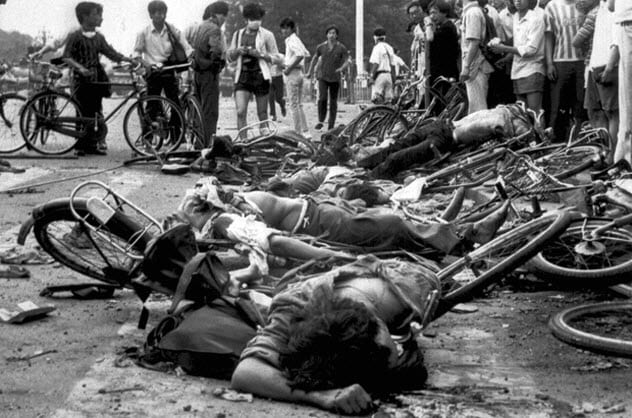
The government issued the order to use live rounds to clear Tiananmen Square, but they kept the details vague. They couldn’t give an order to shoot civilians in writing, so they never specified whether those bullets were to be warning shots or lethal fire. The soldiers had to decide that for themselves—and take them blame themselves.
They were promised that there would be “no legal consequences”[4] if their bullets entered people’s bodies. Still, some of the men just pointed their guns up and fired warning shots, refusing to kill their own people.
Not everyone, though, had qualms about hurting the people. By now, the protests were often violent. Some people were throwing bricks and bottles at the soldiers, while others were trying to pry apart the troops’ vehicles with iron bars. Some soldiers were getting angry, and some were looking for an excuse to kill.
A group of soldiers signed an oath in their own blood to clear Tiananmen Square. One battalion marched toward the city center on the motto, “Reach Tiananmen or die!”
“No one said to shoot, but it was, like, ‘We’re going to teach them a lesson,’ ” recalled one soldier, Wang Yongli. “And then those soldiers unleashed their fury.”
The Tiananmen massacre had begun.
6 Tanks Ran Down The Fleeing Students
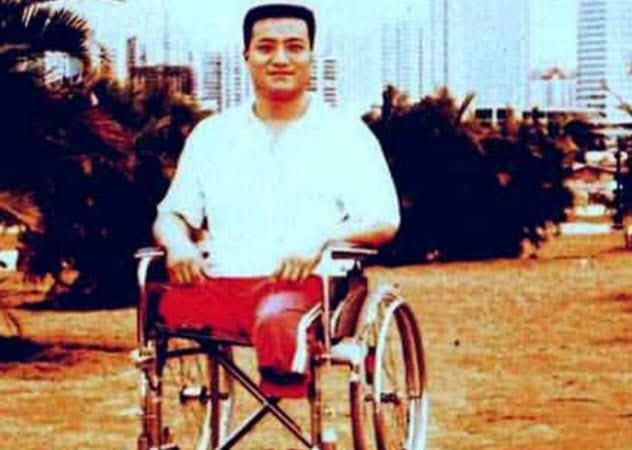
Once the massacre had started, few stayed at the square. The government was launching gas bombs, firing live rounds into the crowd, and charging through with tanks. Most people ran for their lives. Even after they’d headed to their own homes, though, some people were chased down and slaughtered.
One student recalled that two of his classmates had simply walked out when the chaos started, heading down a bike lane at a slow pace. The gas had been let out, but they couldn’t imagine the government would stop them from heading back home. So, as everyone else panicked, they walked out at a slow and careless pace.
A tank, though, barreled down behind them, chasing after the fleeing group. The two boys who’d chosen to walk were crushed first. One was killed on the spot. The other had his pelvis crushed under the treads of a war machine, leaving him crippled and dying a slow a painful death that took years.
The witness counted 11 students crushed by the tank’s stampede. One named Fang Zheng confirms the story, saying that he was carrying a girl out of the tank’s path when his legs got pulled under the vehicle and crushed. He had been an Olympic-level discus thrower, but now his career was over. For the rest of his life, he would be under strict government orders to tell anyone who asked that he’d lost his legs in a car accident.[5]
5 A Mob Tore Apart An APC Full Of Soldiers
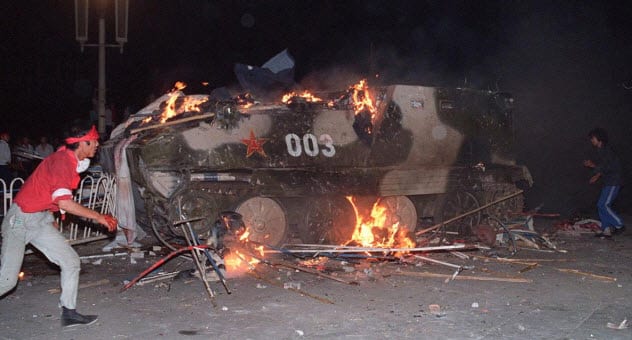
As the columns of tanks and armored personnel carriers (APCs) rolled into Tiananmen Square, one of the APCs fell out of formation. Soon, it found itself surrounded by a crowd of furious people.
The driver tried to get out of the crowd safely before they swarmed the vehicle, but he couldn’t do it. As he repositioned his vehicle, he accidentally ran over a few protesters and crushed them to death.[6]
The crowd went wild. This time, they didn’t run away. A mob jumped on top of the APC and started tearing it apart. They pulled out the men inside the vehicle and, as the soldiers looked on, beat the men to death and torched the vehicle.
The army didn’t react right away, terrified that they’d make things worse. But once they’d seen their comrades killed and their vehicle destroyed, they opened fire into the crowd, gunning down dozens of people while the others ran for their lives.
4 Chengdu Was Even More Violent
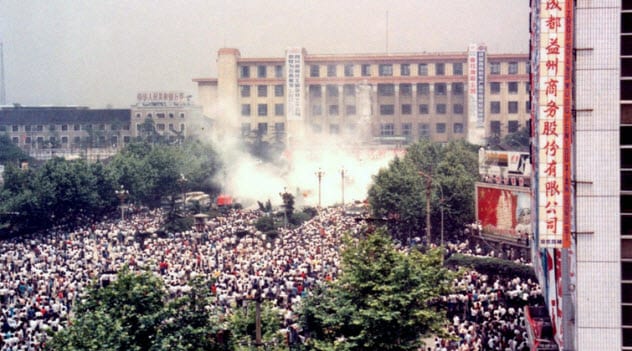
The Tiananmen Square massacre didn’t just happen at Tiananmen. Protests broke out in places across the country, and the one in Chengdu may have been even more violent.
The crowd there gathered in Tianfu Square, a place they’d dubbed “Little Tiananmen.” At first, they were peaceful. But when word got out about what had happened in Beijing, things changed.
The people of Chengdu took to the streets with banners that read “June fourth massacre” and “We are not afraid to die.” When the police came, the protesters hurled rocks at them. The police struck back with tear gas and batons, and the whole place erupted into chaos.
A full-on battle broke out between the people and the police. According to witnesses, a crowd ganged up on a man they thought was a cop, threw him to the ground, and stomped his face until there was nothing left. Others say that they saw cops hurling people into trucks like sandbags, piling them on top of each other and suffocating those stuck at the bottom.
By the end, 1,800 people were injured in Chengdu. Eight were confirmed dead, and many more just disappeared. Some families had to spend the rest of their lives demanding to know what had happened to their sons.[7]
3 Photographers Were Beaten And Robbed
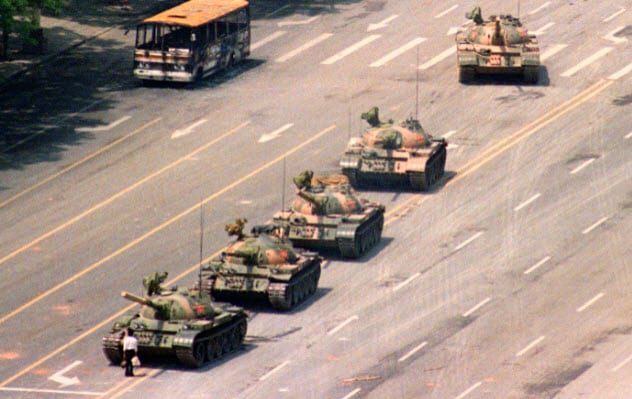
There were photographers and journalists all over Beijing, but that didn’t mean the government was happy about it. They didn’t want footage of the massacre getting out, and they sent the Public Security Bureau—China’s secret police—to keep any pictures from leaving the country.
Charlie Cole, the man who won a World Press Award for his photo of the “Tank Man,” had to risk his life to get the shot. When he headed to his hotel’s rooftop to snap pictures, he was tackled by secret police. They hit him with a cattle prod, beat him bloody, and stole all his film.
He convinced them, though, to let him keep his camera and managed to hide some unused film. When he made it to the top, he saw Tank Man in action and snapped the famous picture. But then he had to find a way to get it out.
Cole went back to his room and taped his photos inside his toilet tank just before the secret police burst through his door. Again, they beat him bloody and stole his film. This time, though, they also took his passport and forced him to sign a statement saying that he had taken illegal photographs during martial law.
But they never found the pictures he’d hidden. When the coast was clear, Cole sneaked out with the photos, rushed them to the AP office, and got the images of the massacre out to the world.[8]
2 Tank Man Was Caught By The Secret Police
Cole wasn’t the only person who caught Tank Man. There are also videos of his act, and they give us a pretty good idea of what became of the man who stood up to a column of tanks.
The man known only as “Tank Man” stared down a column of 25 tanks, daring them to run him over. When it became clear that he wouldn’t let them pass no matter what they tried, some men pulled him out of the way.
In the videos, we can see a man on a bicycle ride up and distract Tank Man while a group of men in blue rush up from behind to grab him. Witness Charlie Cole described the men as secret police. As they pull Tank Man away, the cyclist and the men in blue throw a conspiratorial wave toward the tanks.
We can’t say for sure, but it seems that these men weren’t worried about his safety. They were officers, dragging him off to jail. That’s certainly what Charlie Cole believes. “I think the government most likely executed him,” Cole has said. “People were executed at that time for far less than what he did.”
The only statement from the government is a vague phrase from General Secretary Jiang Zemin. When asked about Tank Man by a US reporter, Jiang said only: “I think never killed.”[9]
1 Deng Xiaoping Eulogized The Soldiers As Martyrs
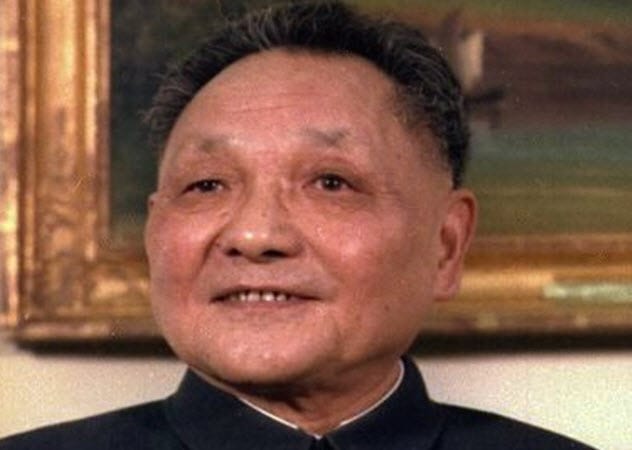
On June 9, shortly after the worst was over, Chairman Deng Xiaoping gave a speech about the massacre. He called the police and the soldiers who had died in the massacre “defenders of the people.” Then he told the crowd, “I suggest that all of us stand and pay a silent tribute to the martyrs.”
Those martyrs, though, were only the soldiers, not the protesters. The civilians who had gone on hunger strikes for democracy and been gunned down by their own army, he said, were not “ordinary people.” These people, Deng Xiaoping declared, were “the dregs of society.”
“We should never forget how cruel our enemies are,” Deng said. He didn’t specify who those enemies were, but he said it a few short days after ordering the Chinese military to gun down its own civilians. “For them, we should not have an iota of forgiveness.”[10]
Read more about shocking massacres on 10 Horrifying Massacres In First World Countries and 10 Lesser Known Massacres.

